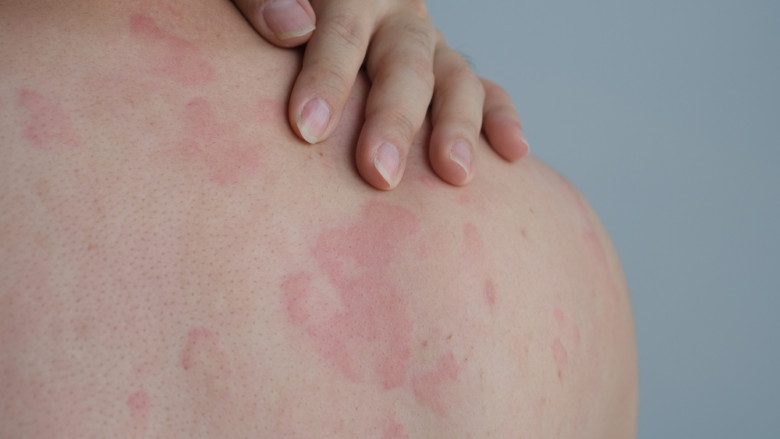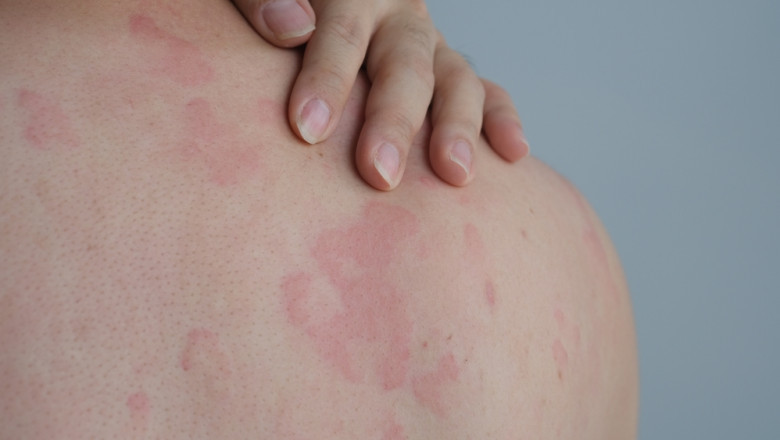views

Introduction
Ever experienced sudden red, itchy welts on your skin that appear out of nowhere? You’re not alone. Hives, also known as urticaria, affect millions of people worldwide. These raised, irritated patches can be triggered by anything from food allergies to stress. But what exactly causes them, and how can you prevent them from disrupting your daily life?
In this blog, we’ll break down the different types of urticaria, uncover its common triggers, and explore ways to manage and prevent flare-ups. Whether you’re dealing with occasional outbreaks or chronic symptoms, understanding the root causes of hives can help you take control. Plus, we’ll discuss the latest clinical trials for hives that could lead to new treatment options.
What Are Hives and How Do They Develop?
Hives are red, swollen welts that appear on the skin, often accompanied by itching, burning, or a stinging sensation. They can vary in size, from tiny spots to large patches, and may last for hours or even days before disappearing.
But why do they appear? Hives are triggered by the release of histamine—a chemical your immune system produces in response to allergens, infections, or other irritants. When histamine is released, small blood vessels in your skin leak fluid, causing the raised, itchy patches we recognize as hives.
For some, hives are a temporary nuisance. For others, it can become a persistent issue, leading to chronic urticaria that lasts for months or even years.
Acute vs. Chronic Urticaria: What’s the Difference?
Hives are generally categorized into two types: acute urticaria and chronic urticaria. Understanding the difference is crucial in finding the right treatment.
- Acute Urticaria – This type lasts less than six weeks and is often caused by food allergies, insect bites, infections, or medications.
- Chronic Urticaria – If hives persist for more than six weeks without a clear cause, they fall under this category. Chronic urticaria is often linked to underlying health conditions, autoimmunity, or environmental factors.
While acute hives tend to resolve once the trigger is removed, chronic urticaria can be more unpredictable and frustrating to manage.
What Triggers Hives? The Most Common Causes
Hives can be triggered by a wide range of factors. Identifying your specific triggers can help you prevent future outbreaks. Some of the most common causes include:
1. Allergic Reactions
Many cases of hives stem from allergic responses to foods like nuts, shellfish, dairy, and eggs. Other allergens, such as pollen, pet dander, or insect stings, can also lead to outbreaks.
2. Medications
Certain medications, including antibiotics, aspirin, and anti-inflammatory drugs, can cause hives as a side effect. If you suspect a medication is the culprit, consult your doctor before discontinuing it.
3. Infections
Viral and bacterial infections, such as the flu, strep throat, or COVID-19, can lead to temporary outbreaks of hives. These cases usually resolve once the infection clears.
4. Stress and Anxiety
Emotional stress doesn’t just affect your mental well-being—it can also manifest physically. High stress levels can trigger or worsen hives, especially in individuals prone to skin conditions.
5. Temperature Changes
Sudden exposure to hot or cold temperatures can lead to hives. Some people develop cold urticaria, reacting to chilly weather or ice, while others experience heat-induced hives after intense physical activity.
6. Autoimmune Conditions
In some cases, the immune system mistakenly attacks healthy skin cells, causing chronic hives. Autoimmune disorders like lupus and thyroid disease are often linked to long-term urticaria.
Is It Hives or Something Else? How to Tell the Difference
Not every itchy rash is hives. Some skin conditions have similar symptoms but require different treatments.
- Eczema: Unlike hives, eczema causes dry, scaly patches that persist over time.
- Heat Rash: This occurs due to blocked sweat glands and is common in hot, humid weather.
- Contact Dermatitis: Caused by direct skin contact with an irritant, leading to redness and itching.
If you’re unsure whether you’re dealing with hives or another skin condition, consult a dermatologist for a proper diagnosis.
Managing and Treating Hives: What Works?
If you’re struggling with hives, there are several ways to manage the symptoms and prevent flare-ups. Here’s what can help:
















![Helium Gas Market [2025-2033] is Growing Rapidly at Upcoming](https://timessquarereporter.com/upload/media/posts/2025-04/15/helium-gas-market-2025-2033-is-growing-rapidly-at-upcoming_1744710967-s.jpg)





Comments
0 comment